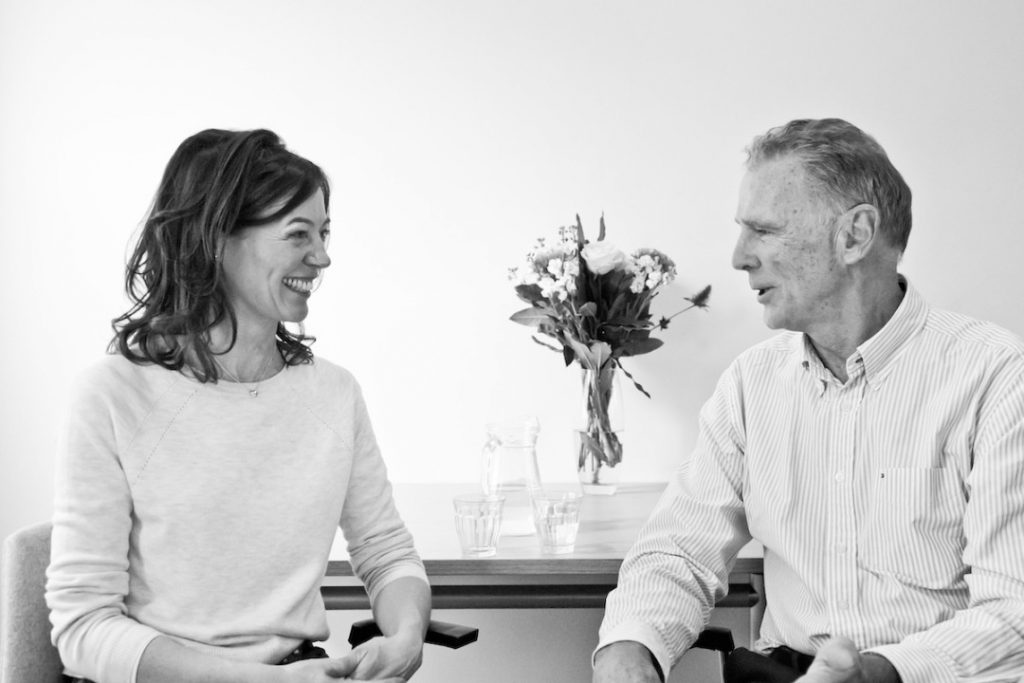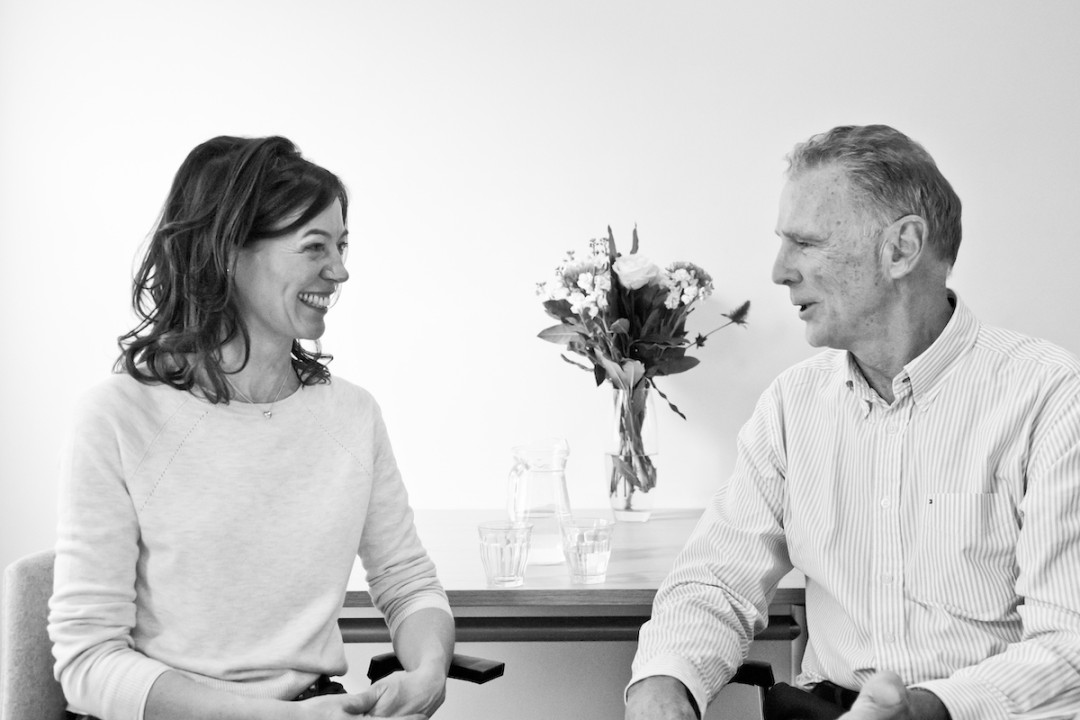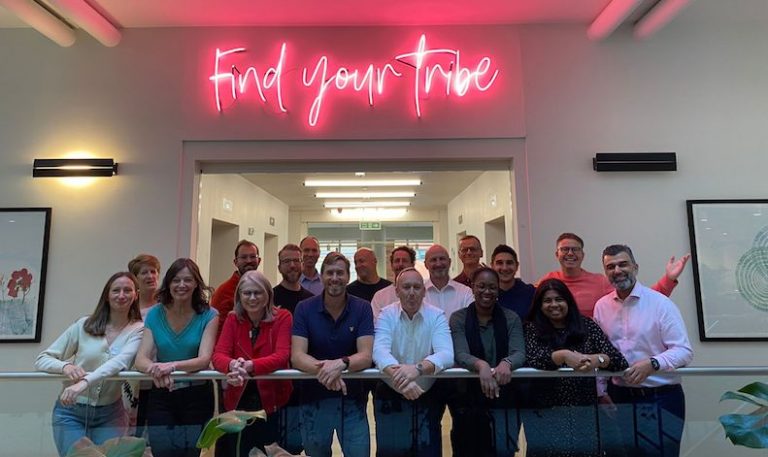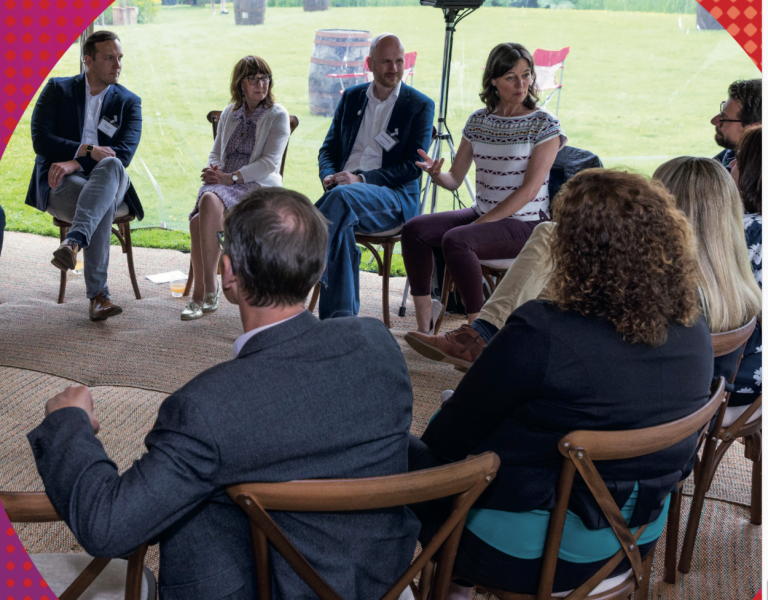
Colleagues in dialogue. Photo credit Clive Sherlock
Senior leaders typically spend up to 80% of their time in meetings. This calls for “black belt mindfulness”[1] or advanced attentiveness, as there can be so many demands on our attention even in a single meeting.
Whilst deepening your presence can be challenging, the results can be transformative. When we are present, we are in touch with what’s really happening. When we’re fully in-the-moment, others respond more fully. When we’re attentive, we see opportunities and risks that we miss when we’re only half there. Our dialogue deepens as our presence expands.
Recent research reveals that presence is a capacity that can be developed. The results of a quantitative survey and in-depth interviews with nearly 200 CEOs and other senior leaders from organisations such as Google, KPMG, Church of England and HSBC found that whilst only 39% had met more than 10 leaders with ‘Executive Presence’ in the last 10 years, the majority believed that leaders are able to expand their presence through mentoring, role modelling, feedback and coaching.[2]
Being in the here-and-now is a vital dimension of energising and engaging the people around you to do great work. When people slow down, they don’t go for the quick fix. When people listen to each other, they do their best thinking. When people ‘land’ in the moment and address what matters most, previously unseen possibilities come into view. Leadership calls for presence because we’re often grappling with something new.
Before we explore presence further, I invite you to try an experiment. This exercise is a powerful way to become more aware of your inner dialogue, which can either support or sabotage your presence. Chris Argyris originally developed this exercise, which has been popularised by Peter Senge and his colleagues [3]. I have adapted for my work with leaders.
Try this – Your ‘left hand column’
- Identify a challenging conversation you had with someone that left you feeling unsettled. It could be from your professional or personal life – with a colleague, friend or family member.
- Take a blank piece of paper and create a table with two columns. At the top of the columns, write the following:
- Right hand column – What was actually said?
- Left hand column – What was I thinking/feeling?
3. In the right hand column write out the conversation as best you remember it. Don’t worry if you can’t recall everything that was said; just capture the essentials.
4. In the left hand column, write out what you were thinking and feeling but not saying. Remember to include any feelings you had at the time, such as frustration, exasperation or disappointment.
A short example appears below:
There are several things to notice here that will support you to deepen your presence.
Firstly, there are more than two conversations running at the same time. There’s the one we’re having with ourselves and the one we’re having with the other person (who is also having a conversation with themselves!) Becoming conscious of the incessant and invisible conversation going on inside us makes a huge difference to how we talk. Remembering that the other person is also having an inner dialogue can make us more curious about what is really going on for them.
Secondly, we often pick up on other people’s body language and tone of voice more than the words that are spoken. Unexpressed difficult feelings, such as anger or hurt, leak into our conversation. If we have negative judgments inside, we transmit this even if we say nothing obvious to reveal it.
To avoid ‘toxic leakage’, it helps to become aware of any signs of agitation and discomfort you feel. Pay attention to these feelings and don’t bypass them. To stop these feelings draining energy from the conversation, you might choose to say something like, “I notice that I’m starting to feel uncomfortable. Can we go back over what we’ve just said?”
Thirdly, it helps to become aware of how much of our left hand column contains judgments about others and ourselves. This critical voice might be anywhere on the spectrum from harsh to mild. It might involve a “should” and “shouldn’t”, such as “They should apologize” or “I shouldn’t have asked him that”. Dealing with our inner critic is key to deepening our presence, and to having better dialogue.
Finally, our ‘left hand column’ also contains intuitions, hunches and insights. Sometimes when I coach a leader, I have a clear sense of the next question to ask them arising inside me. The question might be more simple or ‘left field’ than a more typical question I’d ask if I wasn’t so present but it is often this question that is the turning point. By becoming more aware of our inner dialogue, we have greater access to a rich source of data that deepens our interactions with others.
Interested to learn more about how to improve your dialogue by becoming more present?
Download a free insights paper with some powerful how-to’s for you and your team.
Check out our two-day leadership development programme, Creating Change through Dialogue, 19-20th November, London. All details here
References
[1] Chade Meng Tan (2012) Search Inside Yourself: The Unexpected Path to Achieving Success, Happiness (and World Peace). HarperOne
[2 ] Potter A. (Spring 2018) Investigating the critical characteristics of an inspirational leader. Assessment and Development Matters
[3] Senge P., Kleiner A., Roberts C, Ross R. B. & Smith B. J. (1994) The Fifth Discipline Fieldbook: Strategies for Building A Learning Organisation. Nicholas Brearley






